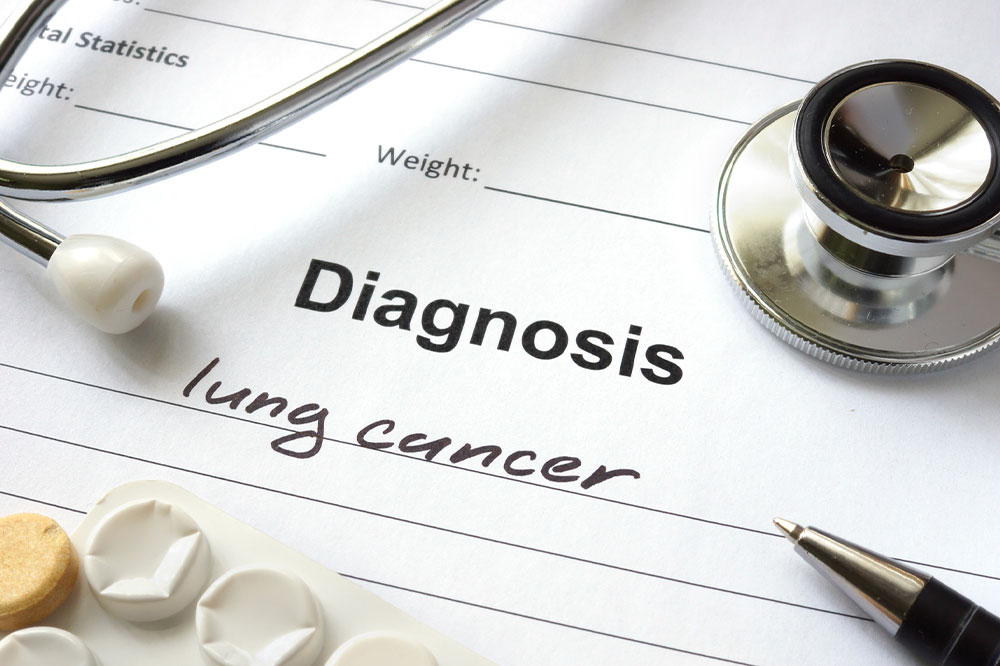Small Cell Lung Cancer – Signs, Causes, Management Options, and more
Rare and rapidly spreading, small-cell lung cancer is one of the most aggressive cancer types. It can affect anyone but primarily affects people who lead unhealthy lives. The only way to avoid developing small cell lung cancer is to stop engaging in risky behaviors. Small-cell lung cancer develops when healthy lung cells mutate or transform into cancerous cells. Following that, these cells divide and grow uncontrollably, forming tumor-like clumps.
Here are some signs and treatments for this illness.

Symptoms of small cell lung cancer
This type of cancer rarely causes symptoms. Some common symptoms include chest pain or discomfort, a persistent cough that produces blood, blood in the cough, breathing difficulties, facial puffiness, exhaustion, and hoarseness. Furthermore, some people may experience wheezing, enlarged neck veins, appetite loss, and unexplained low BMI levels. Several of these symptoms are like those of other, less serious illnesses. If someone engages in unsafe practices, they may develop such symptoms, which a doctor should evaluate.
Causes of small cell lung cancer
Lung cancer can affect anyone, but those who engage in unhealthy behaviors that can seriously harm the lungs are at a higher risk. Other causes and risk factors include radiation from cancer treatments or imaging scans and radon gas, a colorless radioactive gas that can seep into homes and other structures. It can also be caused by exposure to hazardous substances such as asbestos, arsenic, nickel, tar, or other toxic chemicals.
Diagnosis of small cell lung cancer
Chest X-rays are frequently used to identify people with lung cancer. If lung scans reveal abnormal spots, a doctor may order one or more of the following diagnostic tests:
- Imaging scans
Lung cancers can be found using CT (computed tomography) and PET (positron emission tomography) scans. CT scans are the most used method for detecting lung cancer. These tests can also be used to determine how far cancer has spread in the body. - Bronchoscopy
A bronchoscope is used by your doctor to search for tumors inside the lung’s airways during a bronchoscopy. They may also collect tissue samples for a biopsy at the same time. - Biopsy
A needle biopsy extracts tissue samples from the lungs. Pathologists in the lab examine the biopsy for cancer cells.
Treatment options for small cell lung cancer
To manage any type of cancer, the overall treatment strategy, which includes different methods, is determined by the patient’s condition. Chemotherapy is the most common treatment for this type of lung cancer. If cancer metastasizes, i.e., the cancer-causing cells start spreading beyond the lungs to other organs in the body, additional treatment or a combination of two methods will be recommended.
Various factors influence treatment options and prescriptions, including the type and stage of cancer, potential side effects, and the patient’s choice and overall health.
Some treatment options for this kind of disorder include:
Chemotherapy
Chemotherapy is the primary treatment for SCLC due to the tumor’s rapid spread. This therapy uses specific prescriptions to kill cancer cells, usually by preventing them from multiplying and dividing. A chemotherapy plan, or regimen, typically consists of several cycles administered over a specific period. Depending on the patient’s needs, a single or a combination of several prescriptions may be administered simultaneously. Patients with limited-stage SCLC receive daily chemotherapy and chest radiation therapy over a few weeks. Patients with advanced-stage SCLC are initially treated with chemotherapy for 3 to 4 months.
Immunotherapy
Immunotherapy combats cancer by enhancing the immune system’s ability to attack cancer cells. The side effects of various immunotherapies can vary, and they include skin rashes, symptoms like the flu, diarrhea, and body mass changes. Before having the treatment, discuss any potential adverse effects with the doctor.
Radiation therapy
High-energy x-rays are used in radiation therapy to kill cancer cells. A radiation oncologist is a cancer specialist who treats patients with radiation therapy. The most common radiation treatment method is external-beam radiation therapy, which delivers radiation from a machine outside the body. SCLC is treatable with radiation therapy, which can also be used to relieve symptoms and prevent cancer from spreading to the brain. Radiation therapy directed at the chest tumor is recommended for patients with SCLC in their early stages. Radiation therapy may be given once or twice a day.
Surgery
Surgery involves the removal of the tumor as well as some nearby healthy tissue. Thoracic surgeons are highly trained in lung cancer surgery. Surgery is rarely used on SCLC patients, and it is only used as a last resort for those with very early-stage illnesses, such as cancer in a small lung nodule. Before surgery, consult with a professional to discuss any potential negative outcomes from the procedure.
In addition to physical symptoms and side effects, cancer and its treatment have emotional, social, and financial consequences. All these side effects are managed by palliative care or supportive care. Palliative care aims to make patients feel better during treatment by managing symptoms and assisting with day-to-day needs. In addition to cancer therapy, individuals who receive palliative care often have less severe symptoms, a better quality of life, and higher treatment satisfaction.
Surgery and other forms of cancer treatment can be physically demanding. Certain cancer treatments may have adverse effects, including low appetite. To deal with the stress of treatment, it is recommended to follow a nutritious meal plan, maintain an active lifestyle, and get plenty of rest.




